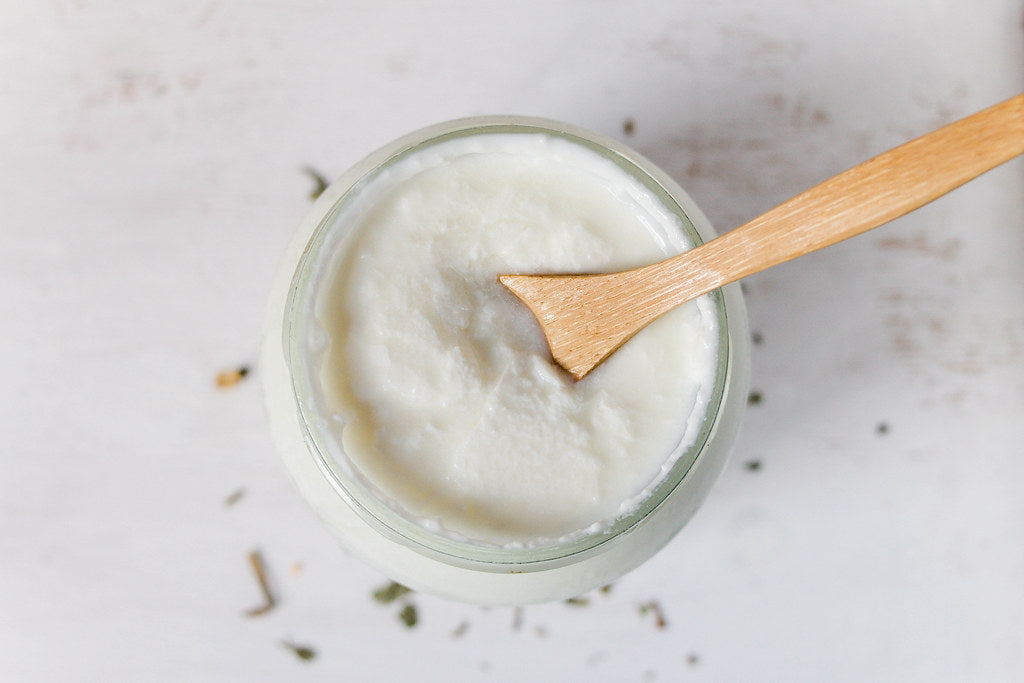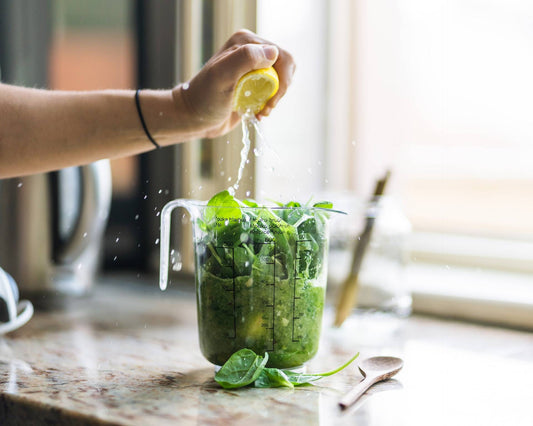

Rebuilding your gut health with homemade yogurt or progurt using a probiotic starter culture can be an exciting journey. The term “yogurt” is reserved for fermented products that contain Streptococcus thermophilus or Lactobacillus bulgaricus. If the product does not contain these it is not allowed to be called yogurt on the commercial market. User groups using other strains of bacteria to make fermented milks have taken up the moniker of “progurt”.
From the perplexing array of bacterial strains and temperature recommendations in yogurt starter cultures to understanding the role they play in creating your favorite natural yogurt, everything can seem a bit overwhelming.
But fear not! While there is science involved, yogurt making is an art, not a hard and fast science. Our guide is here to demystify many aspects of yogurt making. Whether you're a novice venturing into homemade yogurt for the first time or a seasoned pro looking to refine your process, our guide will help you navigate the yogurt-making landscape like a champ.
Before diving into the intricacies of yogurt starter culture, let's look into why you should consider using yogurt cultures to make yogurt at home and the many health benefits of homemade yogurt!
Homemade yogurt and gut health
Different versions of traditional yogurt have been a part of cultures worldwide for centuries. You might have come across the Turkish yoğurmak, Iranian mast, Indian dahi, or the popular strained yogurt, also known as Greek yogurt during your grocery runs and wondered about the difference.
Each of these traditional yogurts contains different live cultures that ferment milk sugar (lactose) and turn it into creamy yogurt full of probiotics, protein, calcium, and various bioactive compounds like lactic acid.
When live active cultures ferment milk, they produce bioactive compounds such as
- Bacteriocins
- Vitamins
- Peptides and amino acids
- Metabolic enzymes
- Short-chain fatty acids
- Antioxidant and anti-inflammatory compounds
- Exopolysaccharides (EPS)
Yogurt has been associated with improved gut barrier health and longevity. A weak gut barrier is one of the most important factors that might predispose you towards chronic inflammation and the onset of several inflammatory and metabolic health conditions such as irritable bowel syndrome (IBS), diabetes, non-alcoholic fatty liver disease (NAFLD), and neurodegenerative diseases such as Alzheimer's and Parkinson's.

What's in a yogurt starter culture, and do you need a starter?
Yogurt started as a wild and spontaneous milk fermentation, with bacteria finding themselves in milk from foliage and animal udders. Today, milk is pasteurized to kill the native bacterial so most store-bought yogurt results from the addition of active cultures that might include probiotics such as Streptococcus thermophilus, Lactobacillus acidophilus, Lactobacillus bulgaricus, etc.
Milk fermentation helps improve the nutritional content of the milk and achieve a pleasing tart and creamy texture. If you want to take advantage of the health benefits of yogurt, consider making your own yogurt.
Making your yogurt at home not only allows you to handpick the probiotic strains that you might want to introduce to your gut in significantly increased CFU counts (over commercial yogurts) but also saves you a bunch of money. Consuming homemade yogurt makes sure you aren't consuming a dud yogurt, since not all store-bought yogurts contain active cultures of probiotics, and typically contain artificial flavorings, fillers, thickeners, and added sugar.
Whether you use “parent” cultures (the first batch) or subsequent batches (the “children” or “grandchildren”), here are a few things to keep in mind. If you save the whey from the first parent batch, you can make several child batches with the whey you save in the refrigerator. Otherwise, it’s like a family and each batch gets further away from the original parent batch. This occurs faster with multi-strain starters than with single strains. But you will also get genetic drift with single strains in multiple generations.
What happens when you add a yogurt starter culture to milk
When you start a new batch of yogurt, the probiotics present in the starter culture feed on milk sugars and produce lactic acid and other metabolites. As the bacteria feed and grow, the increased lactic acid raises the acidity and lowers the pH of the yogurt.
The increased tartness of the yogurt has a twofold effect. On one hand, it makes the yogurt inhabitable for pathogenic bacteria, while also causing the milk protein (casein) to clump together and form a gel-like texture. Sometimes in a highly active fermentation, the whey (another protein present in milk) might separate from the yogurt. The whey separation is one of the technical challenges of the longer 36 hour fermentation and the fermentation will sometimes need to be pulled earlier than 36 hours

Do you need a yogurt maker?
Different types of lactic acid bacteria thrive in specific temperatures and durations. The yogurt culture you use might have thermophilic (heat-loving bacteria) or mesophilic bacteria (prefer moderate temperatures). A yogurt maker, while not strictly necessary, can take the guesswork out of making your yogurt. Our Sugar Shift starter culture contains mesophilic species that prefer a temperature closer to our body temperature.
Lactic acid bacteria (Lactobacillus acidophilus, etc.) and temperature
Thermophilic starter cultures that have strains such as Streptococcus thermophilus prefer growth temperatures ranging from 90 to 110 F whereas mesophilic starter cultures prefer temperatures in the range of 70 to 78F.
Yogurt and non-dairy milk
Milk has a natural sugar, lactose, that the yogurt starter cultures can use for growth, while the presence of proteins and fat allows for a lovely creamy texture. I like to make my yogurt with half and half to get a thicker, creamier texture. I have even used whole cream which makes an amazing yogurt with the thickness of ice cream. But, non-dairy milk doesn't have the same advantages and as a result, may differ in texture (thinner consistency) in addition to needing added sugar to start the fermentation.
Typically, neutral thickeners such as inulin (chicory root) or hydrolyzed guar gum (PHGG) are mixed in with the non-dairy milk before heating it and cooling it down to a starter-specific temperature before adding the starter culture.
The fermentation process of non-dairy milk can take anywhere between 12 to 48 hours depending on the starter culture.
Making Yogurt at home with the Sugar Shift® Starter Culture
Choosing the best yogurt starter culture for your homemade yogurt can be daunting at first. Still, the choices can be simplified when you look at the potential benefits associated with specific probiotic strains.
For instance, Dr. William Davis, author of Wheat Belly, recommends this homemade yogurt as a delivery system for the probiotic L. reuteri. L. reuteri has been associated with health benefits including protecting the gut barrier, reducing inflammation, reducing oxidative stress, and maintaining the gut microbiota.
Additionally, L. reuteri has also been linked with increased release of oxytocin, also known as one of the happy hormones. Oxytocin plays an important role in feelings of bonding and trust.

In his blog, Dr. Davis shared about Biotiquest: “I’ve gotten to know the founders of the probiotic company, BiotiQuest, Martha Carlin and Raul Cano, Ph.D. These are two serious scientifically-minded people who bring rational science to the formulation of probiotics, a surprisingly uncommon thing. This product, Sugar Shift®, incorporates the concept of microbial “collaboration” via “guilds” or “consortia,” a collection of microbes that work together to generate specific health benefits for the host (you).”
Our Sugar Shift® Starter Culture contains contains Leuconostoc mesenteroides (LM-37), Pediococcus acidilactici (PA-68), Lactobacillus plantarum (LP-36), Lactobacillus paracasei, Lactobacillus reuteri (PCR7), Bifidobacterium bifidum, Bifidobacterium longum, and Bacillus subtilis (DE-111) in addition to prebiotic fiber, inulin. Inulin works as supplemental food that supports the growth of the starter culture when added to your preferred milk.
Here’s my go-to recipe:
- 1 scoop Sugar Shift® Starter Culture or use Sugar Shift® capsules (simply open 2-4 capsules into a bowl. It doesn’t need to be precise).
- 1-quart half-and-half or whole cream
- Note: Some homemade yogurt recipes call for 1-2 T of inulin. I don't add inulin because Sugar Shift already contains inulin. I find that too much can actually cause the whey separation earlier.
 In a medium to large bowl, combine the Sugar Shift®, and 2 tablespoons of half-and-half. Make a slurry to ensure it does not clump. Mix thoroughly. Stir in the remaining half-and-half. Cover lightly. You can culture your yogurt at room temperature on your countertop or in the oven if you have a “proof” setting or place your yogurt mix in a fermenting device (AKA yogurt machine), and ferment at 98 to 100 degrees F for about 12 - 36 hours. Every batch is unique, don’t worry if your yogurt takes longer or it’s done sooner. Taste along the way and refrigerate when you reach the consistency and flavor you like best. You also need to watch the yogurt for whey separation which is a sign that you have gone too long. Don’t be discouraged if you have a “flop” that ends up with a lot more whey than yogurt. You can use a cheesecloth to strain the yogurt and make it into a nice soft cheese. You can use the whey in smoothies or soups for added protein.
In a medium to large bowl, combine the Sugar Shift®, and 2 tablespoons of half-and-half. Make a slurry to ensure it does not clump. Mix thoroughly. Stir in the remaining half-and-half. Cover lightly. You can culture your yogurt at room temperature on your countertop or in the oven if you have a “proof” setting or place your yogurt mix in a fermenting device (AKA yogurt machine), and ferment at 98 to 100 degrees F for about 12 - 36 hours. Every batch is unique, don’t worry if your yogurt takes longer or it’s done sooner. Taste along the way and refrigerate when you reach the consistency and flavor you like best. You also need to watch the yogurt for whey separation which is a sign that you have gone too long. Don’t be discouraged if you have a “flop” that ends up with a lot more whey than yogurt. You can use a cheesecloth to strain the yogurt and make it into a nice soft cheese. You can use the whey in smoothies or soups for added protein.
I also recently made a coconut milk recipe from a customer recommendation that was good:
- 1 T gelatin (you need to dissolve it first)
- 1-2 T Honey
- 2 cans of coconut milk (I used Organic Thai Coconut milk)
Heat shock the milk to 190% for about a minute and then cool down over ice to 100%. Then add either 1 scoop of the starter culture or 2-4 capsules of Sugar Shift. Then culture at 98 degrees for 16 hours. Don't go too long or it can become rancid. If using gelatin, it will not be vegan. There are other thickeners like tapioca or potato starch that could be used to replace the gelatin.
Q&A :
What can I use for yogurt starter culture?
You can use the Sugar Shift® Starter Culture to make your yogurt at home.
What is the starter culture of yogurt?
Yogurt starter cultures contain a mix of bacteria that eat the milk sugar (lactose) and turn milk into a tart and creamy gel-like texture associated with numerous health benefits.
Can I use store-bought yogurt as a starter culture?
Organic yogurts that contain live active cultures can be used to start home milk fermentations
How do you keep yogurt starters alive?
When using a single strain culture, you can save 2-3 tbsp and use it within a week to start your new batch of yogurt. When using a multiple strain starter, it is best to not do a "child" batch more than once or twice from the original starter before starting fresh.
What is the difference between a single strain culture and a multiple strain culture?
Single strain yogurt cultures are used to make one batch at a time whereas child batches are made with leftover yogurt from a previous batch. You can do multiple child batches with single strains, but you may find that they get too tart the longer you reuse the starter. You can also use the whey from a batch to start a new batch.
With gratitude,

 Martha Carlin, is a “Citizen Scientist”,
systems thinker, wife of Parkinson’s warrior, John Carlin, and founder of The BioCollective , a microbiome company expanding
the reach of science and BiotiQuest, the first of it’s kind probiotic line. Since John’s diagnosis in 2002,
Martha began learning the science of agriculture, nutrition, environment, infectious disease, Parkinson’s
pathology and much more. In 2014, when the first research was published showing a connection between the gut
bacteria and the two phenotypes of Parkinson’s, Martha quit her former career as a business turnaround expert
and founded The BioCollective to accelerate the discovery of the impact of gut health on all human disease. Martha was a speaker at the White House 2016 Microbiome Initiative launch, challenging the scientific
community to “think in a broader context”. Her systems thinking background and experience has led to collaborations
across the scientific spectrum from neuroscience to engineering to infectious disease. She is a respected out of the
box problem solver in the microbiome field and brings a unique perspective to helping others understand the
connections from the soil to the food to our guts and our brains.
Martha Carlin, is a “Citizen Scientist”,
systems thinker, wife of Parkinson’s warrior, John Carlin, and founder of The BioCollective , a microbiome company expanding
the reach of science and BiotiQuest, the first of it’s kind probiotic line. Since John’s diagnosis in 2002,
Martha began learning the science of agriculture, nutrition, environment, infectious disease, Parkinson’s
pathology and much more. In 2014, when the first research was published showing a connection between the gut
bacteria and the two phenotypes of Parkinson’s, Martha quit her former career as a business turnaround expert
and founded The BioCollective to accelerate the discovery of the impact of gut health on all human disease. Martha was a speaker at the White House 2016 Microbiome Initiative launch, challenging the scientific
community to “think in a broader context”. Her systems thinking background and experience has led to collaborations
across the scientific spectrum from neuroscience to engineering to infectious disease. She is a respected out of the
box problem solver in the microbiome field and brings a unique perspective to helping others understand the
connections from the soil to the food to our guts and our brains.


Waking Up to a Probiotic Breakfast Can Do Wonders for Your Gut Health
Did you know that recent studies show people with poor gut diversity had lower quality of life? The health of your microbiome impacts your mental health, sleep, energy, the risk for chronic illnesses, and much more. A probiotic breakfast can...

Can Probiotic Supplements Make or Break Your Fast?
Intermittent fasting (IF) may have started as a fitness trend for weight loss, but today it's a go-to lifestyle choice for many. Practicing intermittent fasting has been linked with health benefits such as lowering blood sugar and insulin, preventing heart...














 Martha Carlin
Martha Carlin







